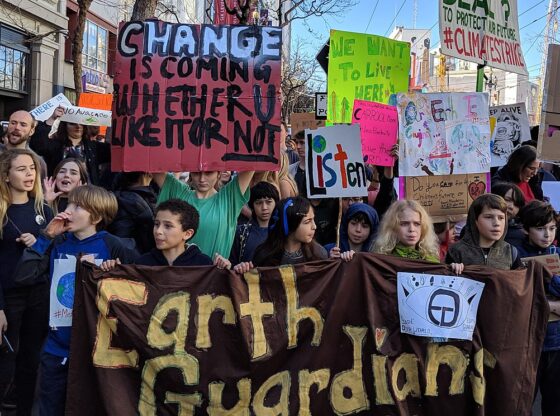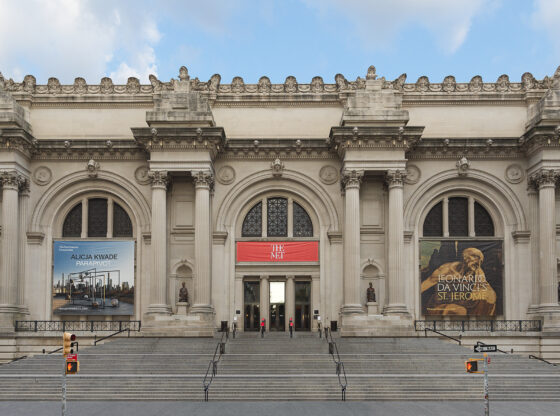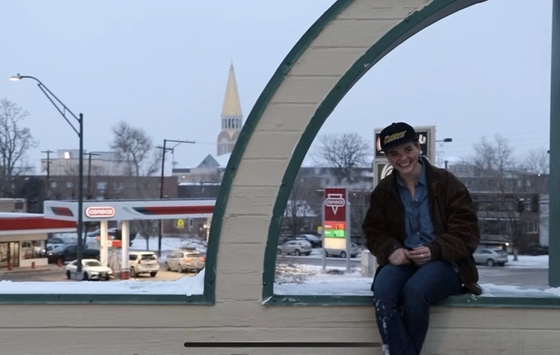
Deborah Howard portrays the ineffable through shoes at the Myhren Gallery on campus.
“Beyond the Shore” is the current exhibit at the Victoria H. Myhren gallery at the Schwayder art building on campus. Having opened on Thursday, Jan. 10, this exhibit includes art formed through various materials, including cast iron, encaustic, cast glass and shoes. Shoes play a prominent role in this exhibit, featured in nearly every art piece.
The artist behind the exhibit is the head of DU’s painting program Deborah Howard. Thepieces she includes deal with the representation of the ineffable, mostly revolving around the Holocaust. The exhibit’s namesake is an excerpt from the book “Man is Not Alone: A Philosophy of Religion” by Abraham Heschel, a Polish rabbi and philosopher who managed to escape to London just before the Holocaust began. The excerpt explains that “reason cannot go beyond the shore” into the realm of the unexplainable.
Howard strives to capture this concept, while maintaining, as she explains, that “the human presence is always there, whether it is represented by an image of a person, a vessel, or a found object.” The human presence is very strongly evident in her work, as each piece conveys powerful emotion behind its physical appearance.
The names of her pieces are more than titles; they’re a piece of the art itself. By giving her pieces names such as “Non Sequitur,” “Empty Nest”, “Psychic Intruder” and “Wasmes et Cuesmet” (the last being names of Belgium cities connecting to her uncle who lived as a hidden child in Beligum during the Holocaust), Howard adds to the viewer’s experience and understanding of the art.
Upon first entering the exhibit, there is a drawing of a man to the right labeled “Jakov Neyman, survivor”; this man appears familiar. After researching his name, the entire presence of the portrait has changed. He is not only a Holocaust survivor; he is the friendly man who sells hot dogs next to the crosswalk on Asbury on campus. Howard has portrayed twenty-five Holocaust survivors in her series Portraits of Child Holocaust Survivors and they are all underneath this portrait in a booklet. His portrait is the one she chose to display in this gallery, for DU students to recognize.
All of her Holocaust portraits are incredibly emotive. The pictures are not only realistic and precise, but they have captured the spirit of the subject. The personality shines through, and in flipping through each picture different characteristics radiate: weariness, compassion, experience, knowledge and strength.
“My goal in this project is to create portraits of people at this moment in time. I am not interested in making them look like victims or heroes. I am interested in capturing their humanity and in depicting very real people who have lived extraordinary lives and also very ordinary lives,” said Howard.
The main feature of the exhibit, the shoes, are so significant because, as Howard explains, “a shoe is the only garment of clothing that can stand independently, like the living being that stands inside the shoe. A worn shoe has the presence of the person who wore it and the changing styles of shoes are markers of time and history, and symbols of age, gender and culture.”
The shoes were artfully arranged in and around the paintings and drawings to add a very human aspect. It was haunting to see all of these empty shoes connected to powerful artistic images. Some shoes were resting next to or below the art pieces, adding to their meaning. Others were not actual shoes, but rather were created with various materials including cast glass, hydrocal plaster, encaustic and cast iron. The shoes varied from heeled slippers to wooden clogs to boots to children’s slippers. The exhibit is mostly in one room as you walk in, but there is a small hallway to the right that leads to the last piece.
After viewing the other pieces and possibly building an emotional attachment to shoes and what they represent, Howard leads you down a hall of empty cast molds of shoes, appropriately titled “The Void.” These molds lack a strong identity and seem devoid of life, and then around a corner to the left is a large pile of shoes, with the caption “Life Goes On.”
This piece features various different kinds of shoes—shoes from the entire last century —that weigh down upon each other and at the same time hold each other up. It is a captivating piece that was masterfully placed and paired with driving electronic music to strongly affect the spectator.
While the majority of the pieces revolve around the Holocaust, the gallery touches upon other struggles as well. One such struggle is that of the American suffragettes represented by three long racks of 1920s-style boots made from various materials including clay, bronze and steel. Also represented are the protests at Tienanmen Square by a pair of plastic red shoes next to mangled bicycle wheel frames on a square yellow piece of fabric.
Howard also pays homage to the ancient struggles of the Jews, with a painting based on writings of a woman named Babata found with the Dead Sea scrolls, the oldest copies of the Torah.
Deborah Howard’s work has been featured in many exhibitions including the Aspen Art Museum, the Mizel Cultural Arts Center in Denver, the Peace Museum in Chicago and the Studio Arts Center International in Florence, Italy. Her drawings from Portraits of Child Holocaust Survivors has been added to the permanent collection of the Holocaust Art Museum at the Yad Vashem Holocaust Memorial in Jerusalem, Israel.
The exhibition runs through Feb. 3 and is open Monday thru Sunday 12:00–4:00pm at the Victoria H. Myhren Gallery.











